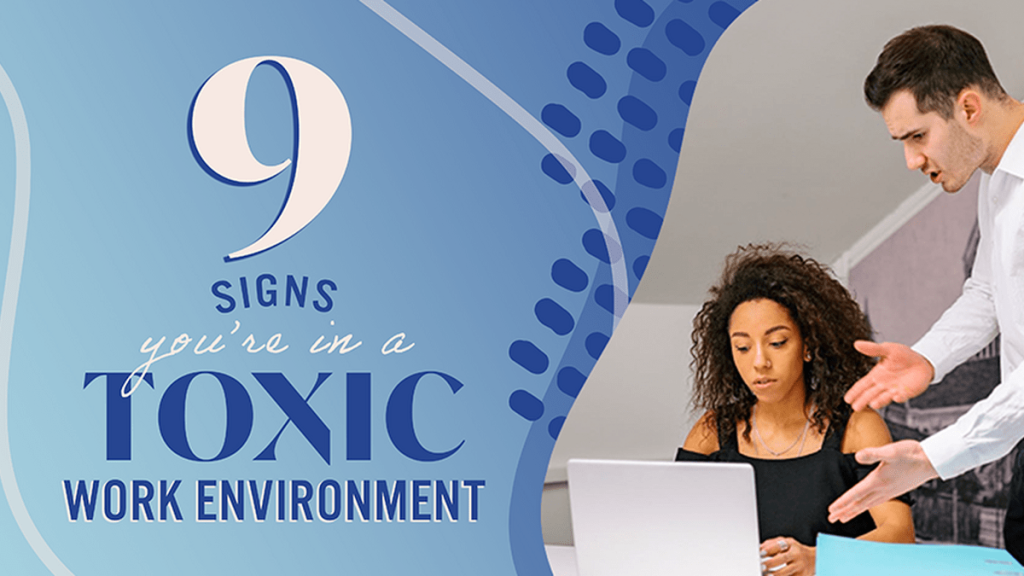For a long time, I believed I had managed to avoid toxic workplaces altogether. I knew toxic environments were real and understood, at least in theory, that they should be avoided. But I didn’t actually know what they looked like in practice. It took years before I recognized the subtle and not-so-subtle signs. Looking back, I realized I had experienced them firsthand; I just didn’t see it clearly at the time.
Instead of questioning the workplace, I blamed myself. I assumed my ideas weren’t strategic enough, doubted my leadership potential, and thought I wasn’t ready for growth. It never occurred to me that the problem could be rooted in the culture around me. Conversations with friends and coworkers helped shift my perspective. Many had been through the same thing, surrounded by toxicity, but were unaware of it at the moment.
Thankfully, there is now a growing awareness of workplace well-being. Companies are becoming more transparent, inclusive, and employee-focused. More people can now recognize toxic work environments and, more importantly, take steps to address them.
What Exactly Is a Toxic Work Environment?
A toxic work environment is one where harmful behaviors like bullying, manipulation, or exclusion are normalized and deeply embedded in the culture. This leads to constant stress, low morale, lack of trust, and even discrimination. Employees may feel unsafe speaking up, fearing punishment or rejection. Over time, this culture can cause anxiety, depression, or burnout. Some workers cry before work or push themselves too hard just to feel valued. According to experts, toxicity isn’t just about one bad boss. It’s often a widespread, systemic issue. Recognizing these signs is the first step toward protecting your mental health and reclaiming your professional confidence.
How to Recognize a Toxic Work Environment
It’s not always easy to tell if you’re in a toxic workplace. Many people, like Lisa Quinn’s leadership coaching clients, assume that poisonous behavior is just part of a “normal” job and learn to adapt. Some even blame themselves when things feel off, especially if others seem to be coping.
Toxic environments can look different depending on your background, experiences, and working style, which makes them harder to define. Still, there are some common patterns to be aware of. While not an exhaustive list, these warning signs can help you determine if your work environment is negatively impacting your well-being.
- Constant Stress and Anxiety: You regularly feel overwhelmed, tense, or dread going to work without clear reasons tied to workload.
- Poor Communication and Isolation: Important information is withheld, or you feel excluded from key conversations, leading to mistrust and confusion.
Lack of Boundaries Around Work Hours
In toxic workplaces, overworking is often seen as a badge of honor. Career coach Eli Bohemond notes that these cultures typically prioritize work above all else, with little regard for personal boundaries. Managers may push themselves to the brink and expect their teams to follow suit, whether they are in the office or working remotely.
You might be expected to stay late, respond to weekend emails, or be “always available.” Bohemond warns job seekers to spot these red flags early. If a hiring manager assigns urgent tasks late on Fridays or expects instant replies at odd hours, it’s a sign of poor boundaries.
Lack of Trust Among Team Members
One clear sign of a toxic workplace is a culture where trust is missing. Career coach Eli Bohemond shares examples of managers closely monitoring employees, whether through constant messaging or physically positioning offices to keep a watchful eye on their desks. This creates a sense of surveillance rather than support.
Communications expert Whitney Simon recalls how micromanagement, especially as the only woman of color on her team, worsened her imposter syndrome. She once blamed herself for being tracked but now sees it differently: overly controlling managers create distrust and inefficiency, leading to underperforming and toxic teams.
Mistakes Are Punished, Not Learned From
In toxic workplaces, mistakes often lead to blame rather than growth. Leadership coach Lisa Quinn describes these environments as “blame-heavy” and aggressive, where errors are met with harsh criticism rather than support. This creates pressure to be perfect and leaves no room for learning.

- Employees may withhold information or shift blame to avoid being targeted.
- The culture fosters competition over collaboration, harming team trust.
- Minorities often face harsher consequences, making mistakes feel career-threatening rather than opportunities for growth and improvement.
Contempt Replaces Respect
Contempt is a hallmark of toxic workplaces, showing up through subtle but damaging behaviors. Leadership coach Lisa Quinn shares the story of a client whose boss regularly rolled his eyes during meetings and dismissed her ideas only to accept the same suggestions when voiced by a male colleague moments later.
Worse, he would repeatedly revise her work, not to improve content but to criticize her writing style and approach. These personal attacks weren’t about quality. They were about control. When disrespect becomes routine, it erodes confidence and fosters a culture where employees no longer feel valued.
Read More: Smart Ways to Advance Job Search Fast
Unhealthy Interpersonal Relationships
Career coach Eli Bohemond explains that the emotional health of a workplace often shows through how employees interact:
- Are coworkers smiling and chatting over coffee or mostly scowling while focused on their screens?
- Do they share lighthearted memes and jokes on platforms like Slack or communicate through cold, blunt messages filled with contempt?
- The overall atmosphere and body language reveal a lot about the workplace culture.
Lack of Support for Employee Growth
In toxic workplaces, employees often have to “figure things out” on their own due to a lack of mentorship and development support, explains career coach Eli Bohemond. This issue has intensified with the rise of remote work, making it easier to feel disconnected from managers and teams.
Entry-level workers suffer the most, often facing demotivation due to a lack of proper guidance and support. Communications expert Whitney Simon highlights that employees from marginalized communities are especially impacted, usually receiving little support to turn potential into career growth.
- “Many people of color I speak with focus solely on their current roles, unaware of other opportunities,” she says. “Without champions advocating for them, they experience career stagnation compared to peers.”
Frequent Experiences of Gaslighting
Gaslighting happens when someone causes you to doubt your feelings, perceptions, or sanity. This can leave employees confused, stressed, and questioning their work or experiences.
A manager might assign projects with clear goals but later deny or change those instructions during reviews, undermining confidence. When marginalized employees raise concerns, such as about racist remarks, they may be dismissed or told they misheard, leading to isolation and discouragement.
Physical Symptoms from Work-Related Stress
In toxic workplaces, mental stress often takes a physical toll. Leadership coach Lisa Quinn explains that chronic stress keeps your brain in a constant “fight or flight” mode, perceiving danger even when there isn’t any. This heightened state can severely impact your long-term health.
Prolonged exposure to stress may cause symptoms such as digestive problems, difficulty sleeping, persistent fatigue, body aches, and panic attacks. Recognizing these signs is crucial to addressing the root causes and protecting both your mental and physical well-being.
Employee Disengagement and High Turnover Rates
In toxic workplaces, employees often mentally check out, losing connection with their tasks, teams, and the company as a whole. Career coach Eli Bohemond notes that this can be observed in virtual settings, where workers often keep their cameras off and limit communication to brief messages.
Over time, this disengagement leads to high turnover. Bohemond warns that frequent employee departures, especially within a specific department or group struggling to retain staff beyond a year, are strong indicators of a toxic work environment.
How to Deal with a Toxic Work Environment
Now that you understand what a toxic work environment looks like, it’s essential to determine how to address it. Here are practical tips to help you navigate your current situation or plan your exit from a toxic company:

- Assess whether you can stay and manage the situation or if it’s best to seek a new opportunity.
- Reclaim your power by setting boundaries and reflecting on what you can control.
- Consider having honest and respectful conversations with those involved to address specific issues if it is safe to do so.
Consider Your Options
Generally, you have two choices: stay and manage the toxicity or leave the organization. While this may seem straightforward, many factors can complicate the decision. You might need to stay temporarily due to financial constraints, immigration status, or limited job opportunities in your field.
Additionally, your workplace may offer unique benefits, such as remote work flexibility or family support, that make leaving more difficult. Take time to calmly evaluate your options before making any decisions.
Reclaim Your Agency
Although no one chooses to be in a toxic workplace, career coach Eli Bohemond advises reclaiming your power in these situations. Reflect on questions like:
- How do I react to toxic behaviors?
- What can I do to improve the situation?
- What obstacles prevent me from leaving?
Address the Point of Conflict
Suppose you decide to stay for the time being. In that case, Bohemond suggests identifying the source of toxicity, whether it’s a manager or a team, and having a “clearing conversation” to provide honest feedback to those involved.
- Schedule this meeting separately from regular check-ins to ensure focused discussion.
- Ask all participants to agree on the agenda beforehand for clarity and cooperation.
- Use specific examples of toxic behavior and express their impact with “I feel” statements to foster understanding.
Ask Yourself Who Can Help You
“Having someone trustworthy to support and guide you is crucial,” says Quinn. She advises picking someone without conflicting interests. For instance, if your salary supports your family, your partner might not be the best person to turn to for financial support. Instead, consider confiding in a close friend, a family member, or a former colleague who can offer unbiased advice.
Have Compassion for Yourself
“There are often many ‘shoulds’ when facing a toxic workplace,” Quinn explains. “I should toughen up; I should know how to handle this by now; I should speak out.” These thoughts reveal a lack of kindness toward yourself.
Plan Your Exit
After reflecting, you may realize it’s time to move on. If you feel drained or overwhelmed about starting job hunting, Bohemond recommends seeking therapy, using saved time off, or requesting mental health leave.

- “Many clients first create space by declining extra work,” Bohemond says. “Then we explore what would make their next career fulfilling and develop a plan to get there.”
FAQs
What are common signs of a toxic workplace?
Common signs include constant stress, poor communication, a lack of trust, a blame culture, contempt, and high turnover rates.
How does a toxic environment affect employees?
It can cause mental stress, physical symptoms, disengagement, anxiety, and career stagnation.
Can toxic workplaces impact physical health?
Yes, prolonged stress may lead to fatigue, sleep issues, digestive problems, and panic attacks.
What should I do if I suspect my workplace is toxic?
Assess your options, reclaim your agency, consider honest conversations, and seek support.
Is leaving the toxic workplace always the best option?
Not always; sometimes, managing boundaries or planning an exit strategically is necessary, depending on personal circumstances.
Conclusion
Recognizing the warning signs of a toxic workplace is crucial for safeguarding your mental and physical health. Toxic environments often foster stress, distrust, and disengagement, which can diminish your professional growth and overall well-being. By assessing your options, reclaiming your power, and seeking support, you can effectively navigate these challenges. Whether you choose to address issues directly or plan an exit, prioritizing your health and career fulfillment is essential to thrive in any work setting.

